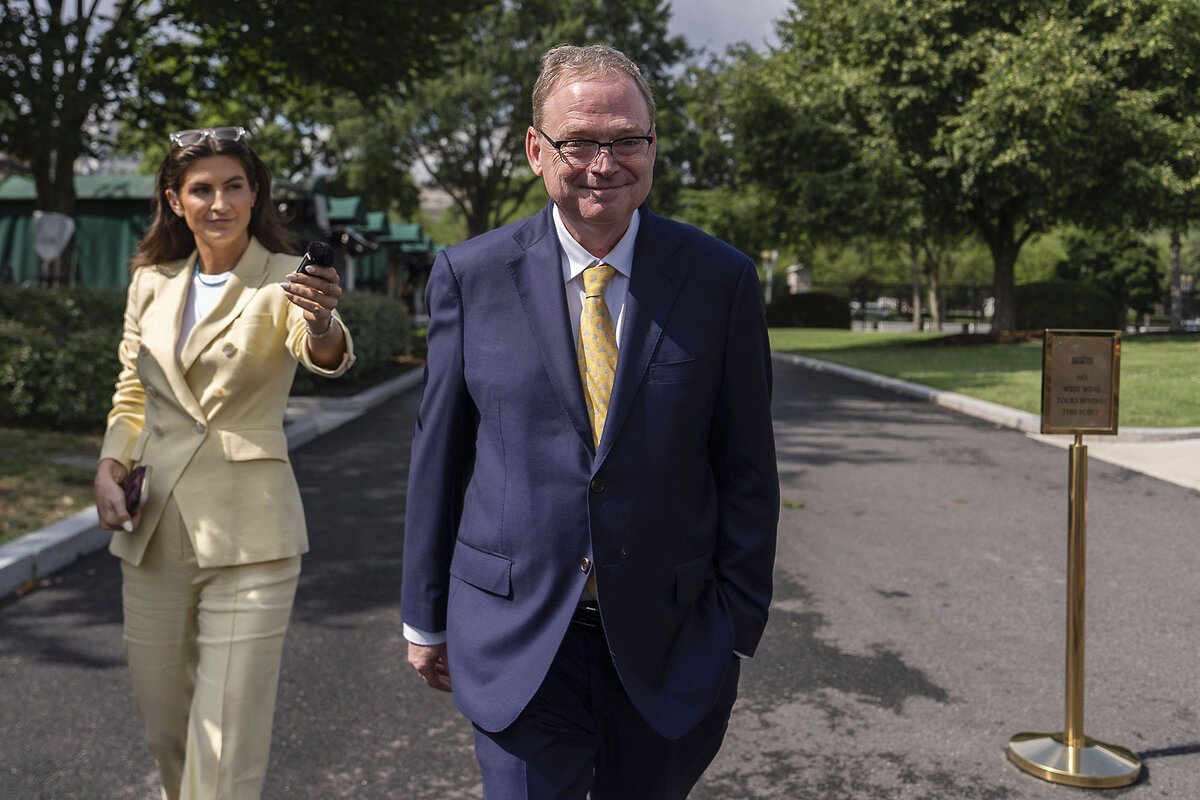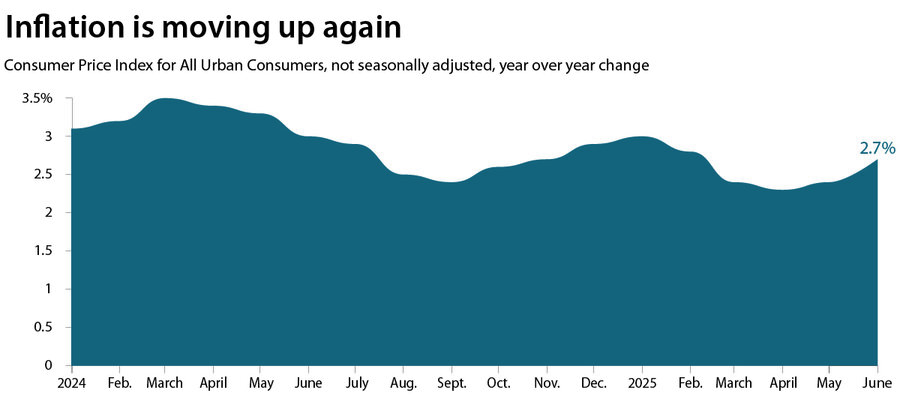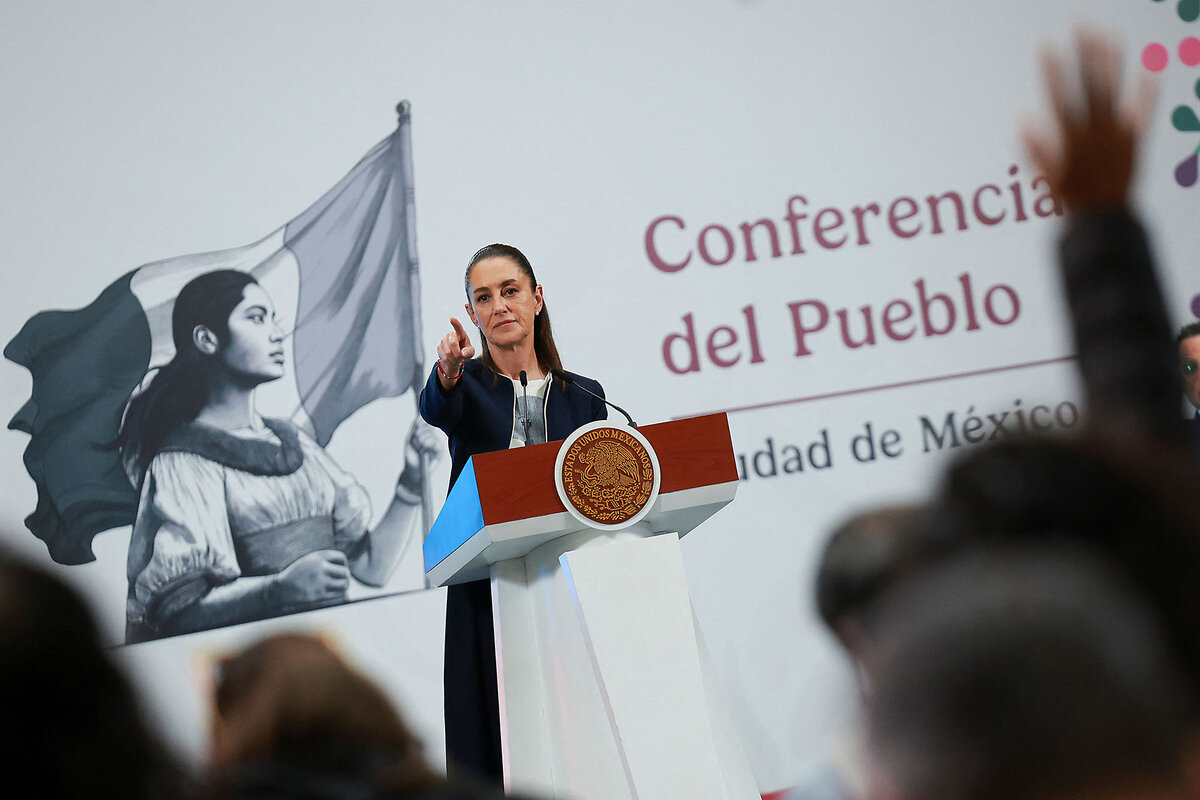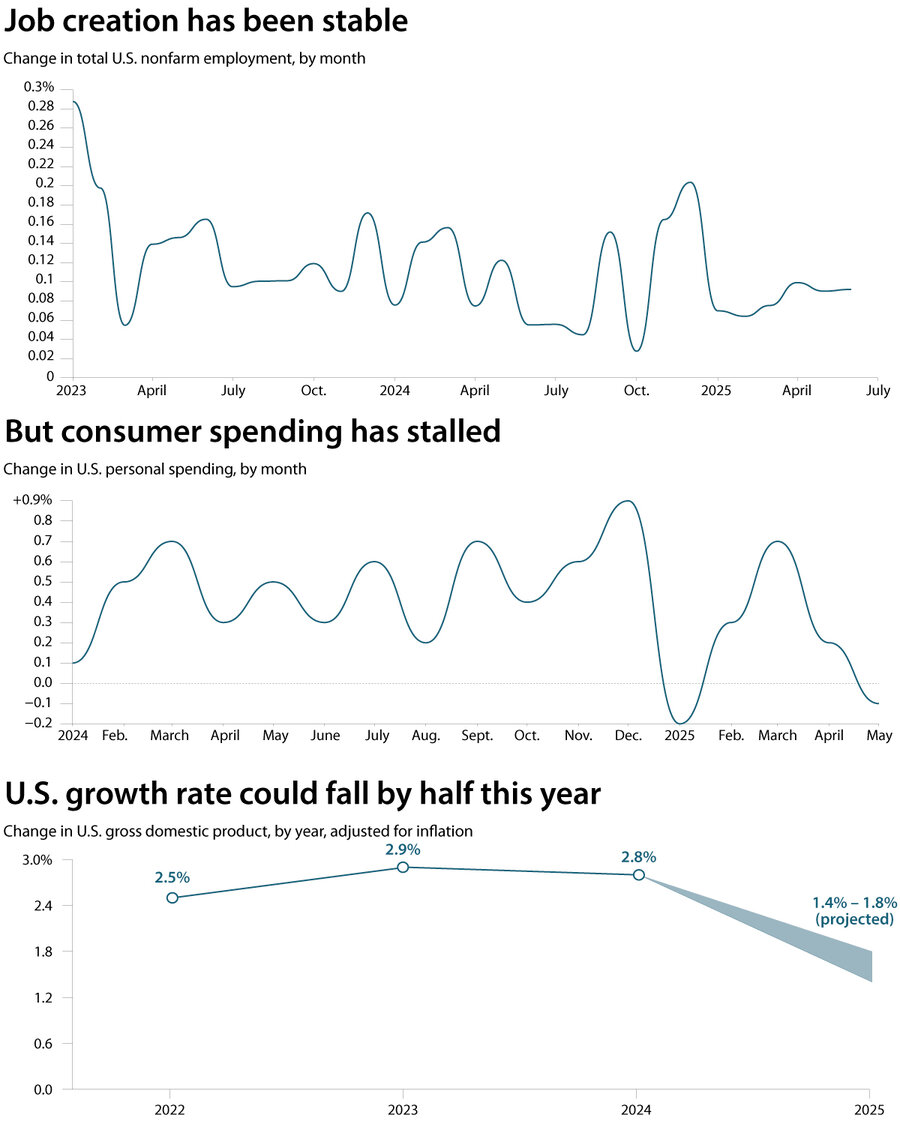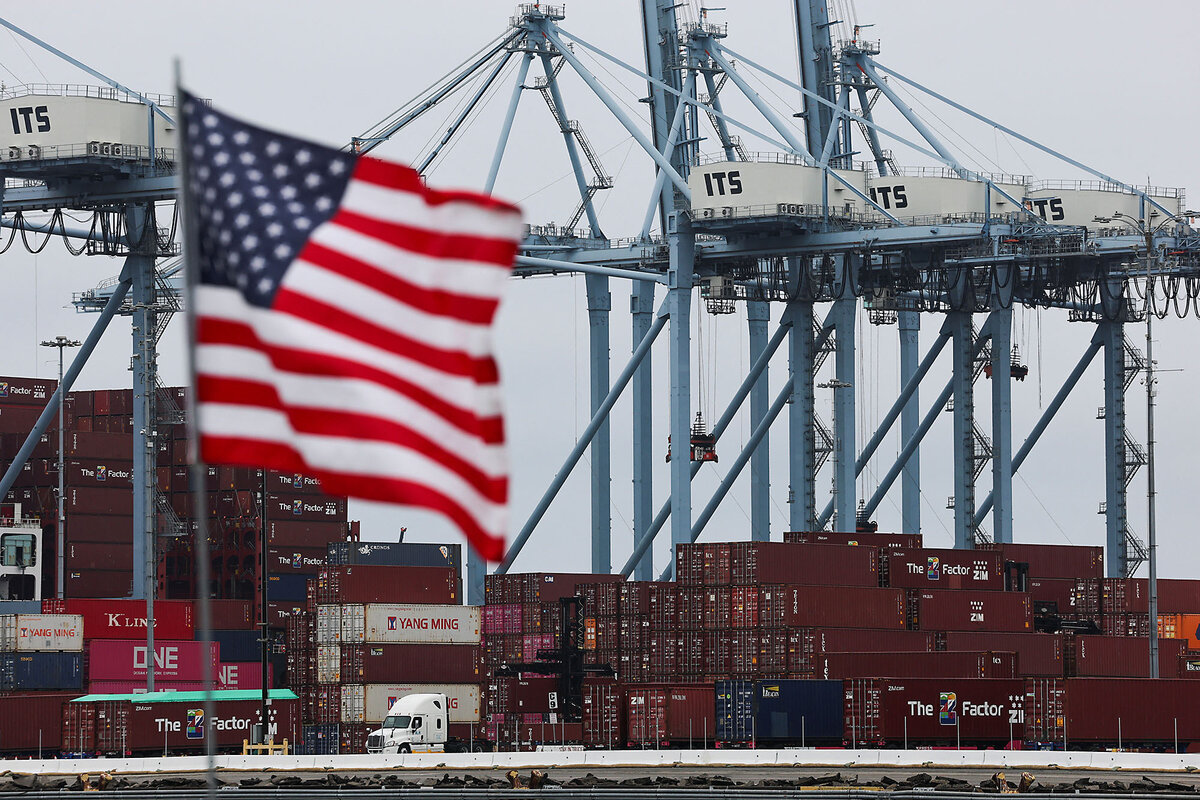Tariffs boost inflation. But many economists see a recession as avoidable.
Loading...
For months, the predictions have been flying: President Donald Trump’s controversial economic policies would drive the United States either into a recession or a period of low growth and high inflation, known as stagflation.
Yet, half a year into his second term, neither prediction has come true. The economy has proved resilient, the job market has expanded, and inflation hasn't surged. On Tuesday, however, the inflation rate moved up for the second consecutive month, reigniting worries that the costs of Mr. Trump's tariffs are finally hitting the economy. The question for consumers, markets, and the White House is whether the economy will retain enough momentum to avoid both a recession and stagflation.
“We should be calling this the Rasputin economy,” says Ryan Chahrour, an economist at Cornell University. Just as the Russian mystic survived poison and gun shots, according to legend, the economy keeps moving forward despite the administration’s policies, he adds. Like many economists, he believes a slowdown is coming. And even Mr. Trump has warned there may be
Why We Wrote This
The U.S. economy has defied dire predictions so far this year. Even with inflation rising and the potential for growth slowing, a recession does not look inevitable.
Nevertheless, the U.S. last month, and the unemployment rate stayed the same. Stock markets have pushed into record or near-record territory, apparently more hopeful about artificial intelligence and Mr. Trump’s tax cuts than scared of his tariff threats. Over the past few days, the president has doubled down on those threats, saying he would slap duties on Brazil (50%), Canada (35%), Mexico (30%), and the European Union (30%), as well as on specific imports, including copper (50%) and pharmaceuticals (up to 200%).
Tariffs act as a tax on consumers because they add a charge on imported goods that the government collects and keeps. That’s also why they tend to push retail prices up, stoking inflation, economists say. But inflation has fallen under Mr. Trump, from an annual rate of 3% in January to 2.3% in April before a slight uptick in May. And looking at imported goods specifically, the White House’s Council of Economic Advisers reported last week that the prices of imported goods have been falling this year.
That finding undercuts what most economists have been saying for months, wrote Alan Tonelson, founder of the RealityChek blog, which focuses on manufacturing economics and trade policy. Tariff opponents “insist that, whatever the actual figures show so far, the worst is sure to come regarding inflation stemming from these levies .... They may be right – but that would mean that their crystal balls have somehow gotten a lot better than they’ve been for several months and counting.”
But on Tuesday, those crystal balls were on target. The U.S. Bureau of Labor Statistics reported that the annual rate of inflation in June was 2.7%, up from 2.4% in May. The so-called core index, which excludes volatile food and energy prices, also moved up to 2.9%.
This puts policymakers in a bind. Some officials of the Federal Reserve's rate-setting committee had been talking about lowering interest rates at its meeting later this month. But with inflation now rising, that case will be harder to make. President Trump has also been pressuring the committee to lower rates, because that would lower the cost of borrowing and boost the economy. His administration has been looking into whether he can fire Jerome Powell, the Federal Reserve chairman.
In recent days, the president has doubled down on his tariff threats. This includes a 50% levy on Brazil, a 35% levy on Canadian goods, and a 15% to 20% minimum tariff for most other countries, instead of the current 10%. He has also called for a separate 50% tariff on imported copper and up to 200% on pharmaceuticals.
He may find it more difficult to make his case if evidence keeps piling up that his tariffs are hurting the economy.
Market moves and tariff threats
So far, markets have largely shrugged off such threats because Mr. Trump has typically delayed – or settled for – lower levies than he has threatened when bond or stock markets start dropping. (On Tuesday, markets opened mixed.) Many economists expect this pattern to continue.
“If they continue to pivot, we should be able to avoid an outright downturn,” says , chief economist of Moody’s Analytics, a research and data firm. “But it’ll be close. It’s going to be uncomfortably close.”
Also, businesses are paying for the heightened uncertainty caused by the administration’s zigzag course on tariffs.
“The facts change week to week,” says , senior fellow at the Peterson Institute for International Economics, a Washington think tank. “If you’re a business and you see this uncertainty, you’re either going to have to hedge against it, or you’re going to have to sit on the sidelines, which is costly.”
Tariffs expected to average 15%
The effective tariff – the average tax on all imported goods into the U.S., including the components that make those goods – started the year at 2.5% and now stands at 8%, Mr. Zandi calculates. He expects the average to settle in around 15% once all of Mr. Trump’s trade deals or policies are hashed out.
If the average effective rate settles somewhere between 10% and 20%, “that would be bad for the U.S., but not worse than a recession,” says Mr. Chahrour of Cornell. “It wouldn’t necessarily be the most noticeable thing in our day-to-day lives.”
Of course, the tariffs are not the only factor affecting Americans. The tax cuts passed by Congress and signed by President Trump may boost the economy and partially offset the drag imposed by the tariffs.
But that benefit will lag behind the impact of the tariffs, which should peak late this year or early next, Mr. Zandi says. A near-term boost to economic growth from the tax breaks should kick in later next year. By the second half of 2026, “the economy should find its footing again, and you’ll get back closer to something like 2% growth.”
A blow for low-income households
Like many tax-cut packages, it will do more to boost the rich than the poor. In a new analysis, the Penn-Wharton Budget Model that the poorest one-fifth of households would lose an average $885 in 2030, because tax cuts wouldn’t make up for the losses in benefits from cuts to Medicaid, SNAP (food stamps), and other federal government programs.
The top 10% of taxpayers, on the other hand, who pay 70% of the taxes, would see 80% of the benefits, the study says. That’s an average $6,805 or more.
Adding tariffs skews the losses to people with low incomes even more, The Budget Lab at Yale found in an analysis earlier this year. Since then, the tax package and tariffs have changed significantly, but the overall effect is the same, , executive director of The Budget Lab, writes in an email. “We continue to expect the impact to be worst for the lowest-income Americans, with the biggest benefits for those with the highest incomes.”
Editor's note: This story has been updated July 15, the date of initial publication, to reflect the release of new economic data on inflation.



